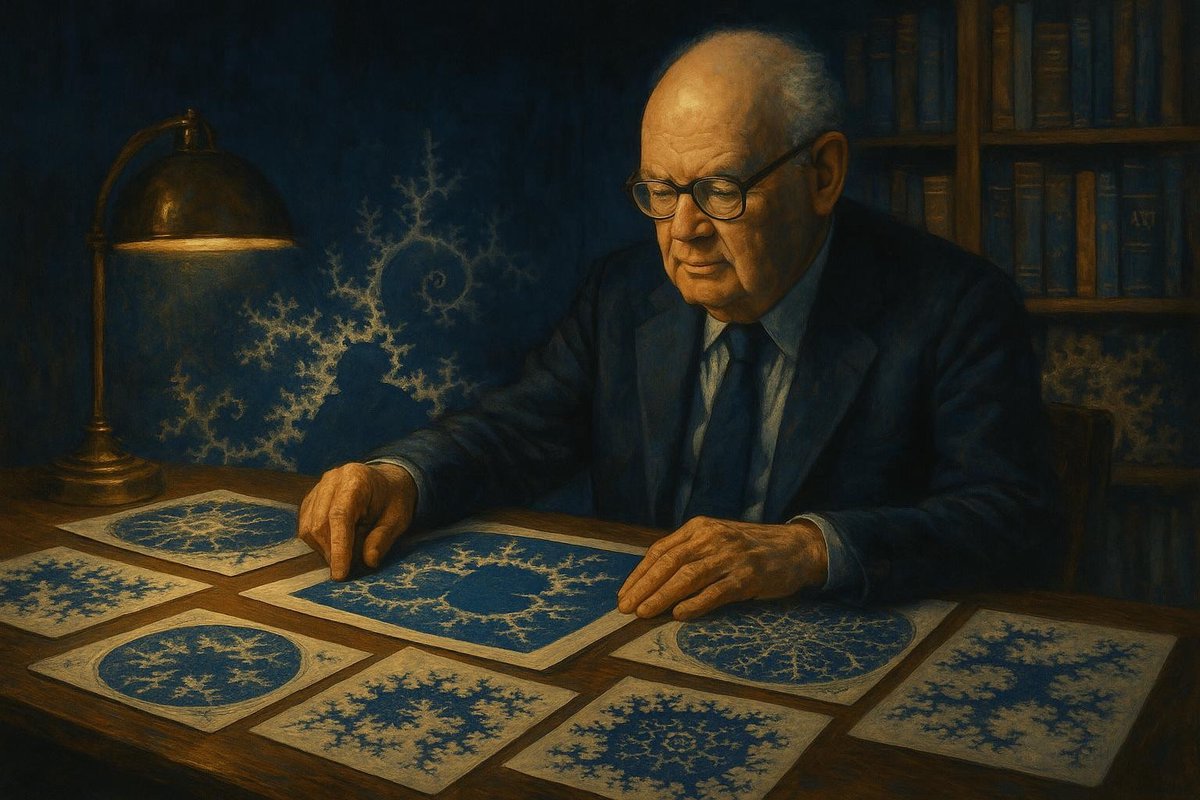
In a world often divided by disciplines, fractals offer a mesmerizing glimpse into how structure and beauty can coexist harmoniously. These infinitely complex patterns are not only found in mathematical equations but also inspire art and even philosophical thought. But what makes fractals so captivating? Interestingly, they reveal a hidden connection between science, art, and philosophy, challenging us to see beyond traditional boundaries.
Early Influences: Planting Seeds of Curiosity
Imagine a young Benoit Mandelbrot, wandering through the countryside of Poland in the early 1930s. The textures of ferns and the jagged allure of coastlines captivated him. This early exposure to nature’s patterns sowed the seeds for his groundbreaking work in fractals later on. No wonder he said, “I coined fractal from the Latin fractus, meaning ‘broken.'”
- 1930s Poland: Young Mandelbrot fascinated by nature.
- Early observations led to mathematical curiosity.
- Influenced by family of academics and intellectuals.
These experiences highlight how intellectual curiosity can stem from seemingly simple observations, bridging the gap between personal interests and professional achievements.
Mental Models: The Science Behind the Art
Fast forward to the 1970s, when Mandelbrot introduced fractals to the world. His unique mental models allowed him to visualize complex mathematical concepts as both scientific and aesthetic phenomena. As time goes on, many people believe that fractals have transformed the way we perceive art and nature.
- 1970s: Mandelbrot’s seminal work on fractals published.
- Revolutionized thinking in mathematics and art.
- Fractals became a bridge between disciplines.
His approach challenges us: How do we interpret mathematical beauty? Is it not akin to an artist’s work, where unseen rules create visible harmony?
Challenges & Resilience: Overcoming Hurdles
Of course, Mandelbrot’s journey wasn’t without challenges. During the early days, many saw his work as fringe science. Yet, his resilience in the face of skepticism led to a paradigm shift across various fields. Who would have thought that a concept once considered esoteric would find a place in everything from stock market analysis to the patterns on a leaf?
- Faced skepticism from mainstream academia.
- Persevered to prove fractals’ significance.
- Fractals now used in finance, medicine, and more.
His story is a testament to the power of resilience in pursuing one’s intellectual vision, even when others doubt its relevance or applicability.
Legacy: A Lasting Impact on Multiple Disciplines
Mandelbrot’s legacy stretches far beyond mathematics. The concept of fractals has permeated various disciplines, leaving an indelible mark. From creating stunning works of art to influencing philosophical discussions about complexity and order, fractals embody the convergence of structure and beauty.
- Fractals inspire new art forms and digital design.
- Philosophical impact on understanding complexity.
- Continues to influence new generations of thinkers.
His work invites us to consider: How might future disciplines evolve by embracing the inherent beauty in scientific complexity?
In summary, Mandelbrot’s vision of fractals as a bridge between worlds continues to inspire. By weaving together the threads of science, art, and philosophy, he revealed the potential for beauty within complexity.
Fuel Someone Else’s Curiosity
Feeling inspired? Why not share these ideas with a friend? After all, curiosity is contagious, and the beauty of fractals is too intriguing to keep to oneself. Let’s continue exploring the interplay of science, art, and philosophy together.

Leave a Reply